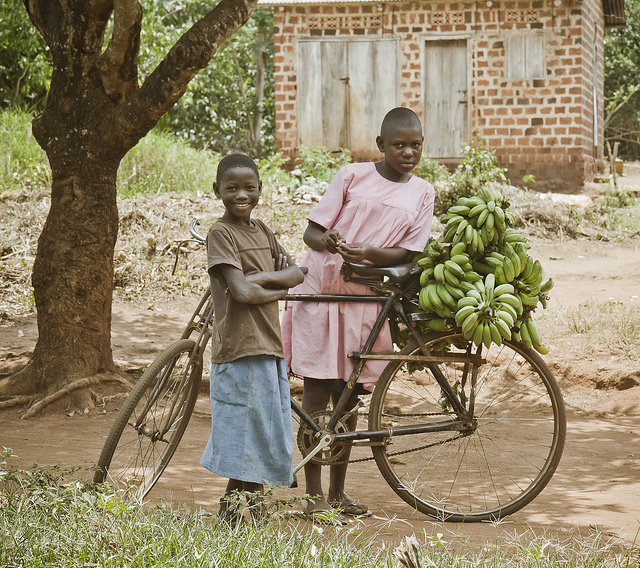OK Matoke

[flagallery gid=1]
Bananas are not created equally. There are many kinds that grow in Uganda, but one is an important form of sustenance and a cultural symbol to the Buganda tribe, which dominates the central part of the country.
Bitooke.
Most often, it’s mashed and steamed inside of banana leaves to make matoke, the national staple dish. In years gone by, it might have been the only food to eat, but at the parish house where we are staying for two weeks, it is accompanied by rice and either beans or peanut sauce.
It is served with every meal. Matoke for breakfast. Matoke for lunch. Matoke for dinner. Heck, we’re dreaming about matoke.
Holy Matoke.
“That’s one of the things I miss most when I am in the U.S.,” says Uganda native Teddy Mwonyonyi, a teacher at the Carl Stokes Academy in Cleveland, Ohio. “We don’t have the right bananas to make it there.”
Matoke is the lifeblood of Uganda. It is comfort food as we found out when we went to the health clinic today. A woman waiting there all night long to see the nurse was hungry. Maggie, the house girl brought the woman matoke.
“Matoke can’t cure what ails me,” the woman said. “But it is satisfying.”
VARIETIES OF BANANAS IN UGANDA:
Bitooke — a savory variety that is used for making matoke
Gonja — picked when not quite ripe and roasted or fried in slices like chips
Bogoya — a sweet banana that is big in size and eaten for dessert
Ndiizi — a sweet banana that is small in size and eaten for dessert
Kivwvi — a sweet banana that is big in size, picked when ripe and cooked without mashing.
Musa — used for making the home brewed beer called “tonto.” Ripened bananas are peeled and mixed with grass and squeezed for non-alcoholic juice. To make beer, you add roasted and crushed sogum and let it ferment in a warm place for 2-3 days and then you get local beer.

Comments